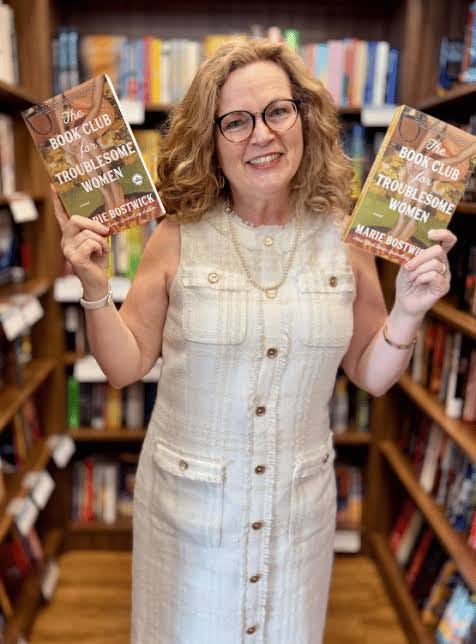Book Review: The Book Club For Troublesome Women by Marie Bostwick
A fictional narrative set in sixties America about the changes in the perspective of a quarter of women, thanks to a book club that they start.
On a quiet evening in March 1963, four women in the silent northern Virginia suburb of Concordia are getting ready for their first book club meeting. Their book is The Feminine Mystique, a controversial book by Betty Friedan, the ideas purported by which were unimaginable at the time. After the meeting, they call themselves the Bettys and begin a lifelong camaraderie that helps them negotiate the ups and downs of their lives that are restricted by patriarchy. Through the book club and their friendships, they identify the severe limitations of their lives imposed by the world, and their aspirations, and find the strength to achieve them.
The Book Club of Troublesome Women is a historical fiction set during the America of the sixties, a time just before radical changes occurred that forever changed its societal fabric. The book is written by Marie Bostwick, a successful writer of women's fiction exploring feminist themes. It began when she had a conversation with her eighty-year-old mother about how reading The Feminine Mystique altered her life permanently. The writer wound her new plot around the book when she realized the impact of it in the sixties by altering the perspective of many women towards leading a life prescribed by a society that was heavily biased against them.
The book features a polyphonic narrative in the third person dealing with the stories of the four titular women. We travel with them through their tumultuous personal and social lives and realize their shift in perspective after joining the book club. While each of the women comes from fundamentally different backgrounds, facing varied challenges, the underlying issue that unifies their plight is the attitude of society that tries to confine them to the mold of a family woman without any career ambitions. It is the attitude of tying women to certain expectations and denying any chance of outperforming.
The book reminded me of two other books that I read recently, the terrific graphic novel Ghostwriter and the popular novel Lessons in Chemistry. Both books deal with the struggles of women who try to break the shackles of conventions. While Ghostwriter uses the format of a psychological thriller effectively to make its point about women being sublimely forced into a life of domesticity, Lessons in Chemistry failed to engage me in the aspect of its feminine themes due to a general lack of agency displayed by the protagonist towards the end and a lack of good character development.
Our book has much going for it, as the writer brings in characters of varied ages and backgrounds, who come with their own individual demons and guardian angels, to tell her plot. The period in which the story happens is a borderline that divides the old and the new normals. People are coming out of the shock of a prolonged war and trying to collect their lives together. After a small stretch of complacent living to get out of the shell shocks of the World War, the desires and ambitions have started rising again. Vietnam, the Civil Rights movement, the Kennedy era, and the second wave of the feminist movement make their appearances in the book.
When we read the book about these troublesome women, we may be puzzled as they don't seem to create as much trouble as expected. But we have to consider the times in which it is set, which was one when a married woman had to get approval from her husband to open a bank account. In that context, we understand the revolutionary action that these women initiate in their lives. But while the book uses its premise to tell personal stories of a bunch of women who were supposed to lead a domesticated life, breaking the confines and redefining their future, we find the writing severely lacking on several fronts.
The major issue that I have is with the characters, who are mostly drawn as broad caricatures. There are times when some of them try to break their limitations and display a little more personality, but the weak plotting brings them soon to their place. While among the four women Charlotte makes a proper impact, and others are too stereotypical, it's the characters of husbands that are treated as plot devices with no organic motives or agency. Though there was a great chance for the author to marinate her plot in important historical events, she decided to limit them to simple background props.
One can identify several obvious references to the terms that are in popular use today, like 'mansplaining,' in the plot, but these occasions, instead of being subtle references, stick out like sore thumbs. As it's a plot set in the background of a book club, we can find a lot of conversations in the book. While those happening in the club are interesting and portrayed with great flair, the writer sometimes uses the same style in outside conversations. This created an artificiality in some interactions. Thankfully she used them only in more formal talks and leaves the personal interactions lively and dynamic.
The Book Club for Troublesome Women has an interesting plot and portrays an important period of history that is still relevant. The issues with its writing and characterization render its treatment of the subject more trivial than it deserves.






